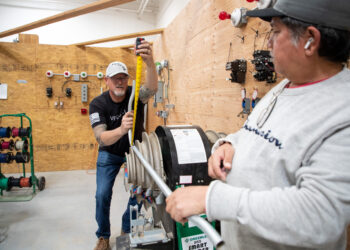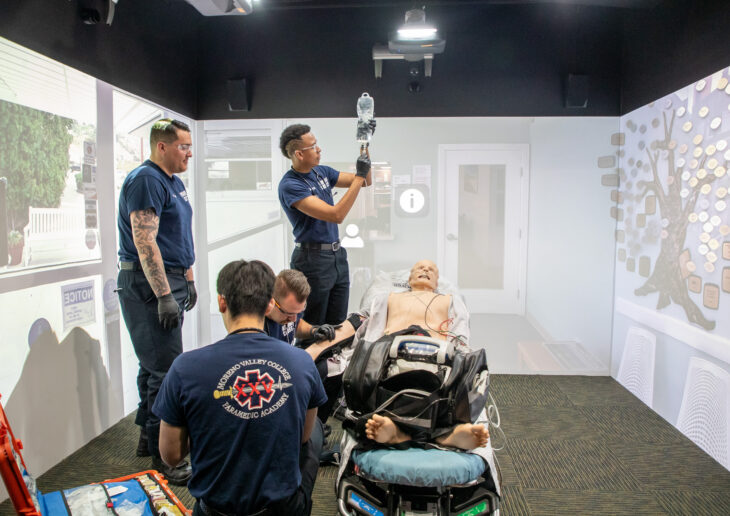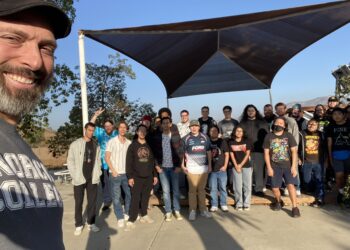Two new Paramedic training programs are set to launch in 2025, helping to fill a critical need in Riverside and San Bernardino counties.
College of the Desert and Mt. San Jacinto College (MSJC) will soon start their first class of Paramedic trainees, adding to existing area programs at Crafton Hills, Moreno Valley, and Victor Valley colleges.
The first 24-student cohort at MSJC will enjoy a 6:1 student-faculty ratio and complete the program in one year. Student costs are covered by Riverside County, including tuition, books, uniforms, labs, parking, and exam fees. MSJC plans to start a new cohort every six months.
“Our paramedic program will fill a void in Southwest Riverside County, where there is high demand from private companies and fire departments,” says James Scholl, Program Director and retired Fire Captain/Paramedic with 27 years of experience in Emergency Medical Services (EMS). “Upon graduation and passing the exam, our students will be making a livable wage.”
The new College of the Desert program is modeled on Moreno Valley College’s highly respected Paramedic Academy. Students will receive 1,334 hours of certified training, which includes lectures, skills training, and field training with partnering agencies. The year-long program is part-time so that students can continue to work while completing training.
“We have had numerous requests over the years from a variety of sources asking that we start a Paramedic program,” says Walt Meyer, Director of the College of the Desert Public Safety Academy. “These sources have included fire departments, ambulance companies, students, politicians, community members, and health professionals.”
These new training programs help fill a national and statewide need that is especially acute in the Inland Empire/Desert region.
“We’re nearing critical mass in the state with paramedic shortages,” says Phil Rawlings, Dean of Instruction for the School of Public Safety at Moreno Valley College (MVC). Rawlings, who oversees the Paramedic Academy and other public safety programs at MVC, is a former Paramedic with more than 30 years in EMS. He retired as a Division Chief for Cal Fire before assuming his current role.
“All the public safety domains were neglected somewhat (during the pandemic),” Rawlings says. He cites mass retirements of emergency personnel coupled with a slowdown of training and certification of new paramedics during the pandemic as key factors leading to Paramedic shortages in the Inland Empire/Desert region. Increased demand for services due to population growth and an aging population are also factors.
But where there is need, there is also opportunity. According to the Inland Empire/Desert Center of Excellence, the demand for Paramedics in the region is projected to increase by 9% through 2027. Nationally, the U.S. Bureau of Labor Statistics projects employment for Paramedics will grow 6% from 2023 to 2033, with about 19,200 openings each year, a 2% increase over the projected average for all professions in the U.S.
Rawlings believes community colleges are best positioned to address the need for Paramedics because of program quality and affordability.
“Because there’s more scrutiny with the publicly operated community college-based Paramedic program and through our accreditation processes and the standards that we must adhere to, I think our programs are typically better than the private programs, and they’re more affordable,” Rawlings says.
Community colleges, he says, exceed regulatory standards for training, including the basic hours of training required. They also offer strong support services for students to help ensure retention and ultimate success.
If student outcomes are any indicator, then MVC’s numbers certainly underscore the point on community college program quality. The recent success/pass rate for MVC students for the National Registry of EMT Paramedic/State Cognitive exam was 96.3%. The most recent retention rate was 93.1%. The positive job placement rate for graduates was 96.3%. Positive placement is defined as “Employed full- or part-time in a related field and/or continuing his/her education and/or serving in the military.”
Because of its success, the MVC Paramedic Academy serves as a model for other programs in the region, and Rawlings is actively working with other leaders to standardize training between the colleges.
Students interested in applying to a Paramedic program must first complete training, certification, and a minimum number of work hours as an Emergency Medical Technician (EMT). Certain prerequisite courses may also be required.
But for those willing to do the work and complete the program, the rewards can be many, including a robust job market and an immediate living wage. For many, though, the real draw is the satisfaction of making a difference and helping people, and that higher purpose also drives those who oversee these programs.
Perhaps Walt Meyer says it best: “The creation of a Paramedic program allows us to serve our community, support our students by providing them a pathway to a great career, support our first responder partners, and ultimately help to save lives.”



